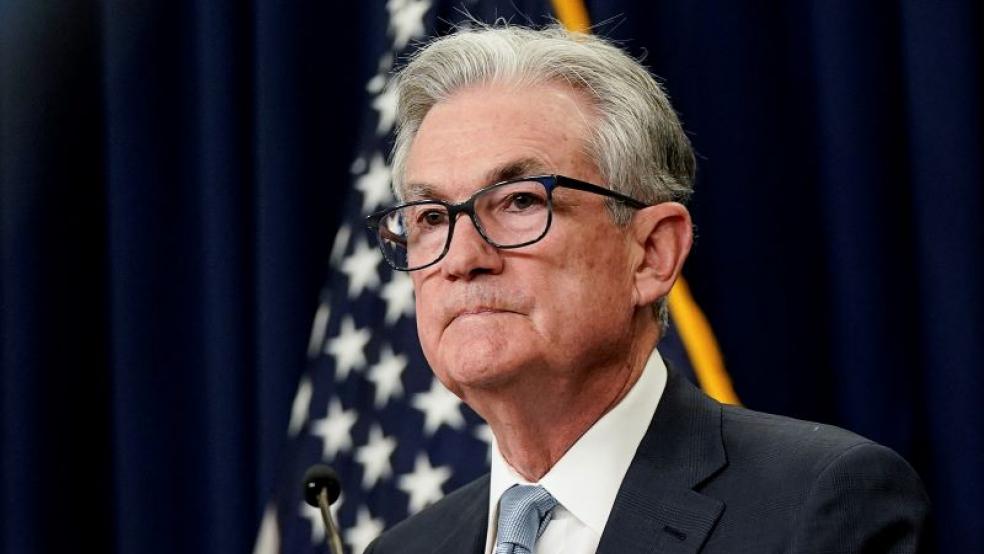A leading measure of inflation was higher than expected in March, as the consumer price index rose by 3.5% on a year-over-year basis.
The March report from the Labor Department, released Wednesday, marked the third month in a row that inflation topped exceeded expectations, fueling concerns that pricing pressure in the U.S. economy is getting sticky and could remain a problem longer than analysts had hoped.
On a monthly basis, prices rose 0.4% in March, higher than expectations of a 0.3% increase.
The core inflation measure, which leaves out volatile food and fuel prices, rose 0.4% on a monthly basis and 3.8% on an annual basis, with the annual number matching the February results but defying expectations for a decline of a tenth of a point.
Major contributors to the rise in the price index were vehicle insurance, up 22.2% year over year; vehicle repair, up 11.6%; rent, up 5.9%; and restaurants, up 4.9%.
What the experts are saying: “Houston, we have a problem,” KPMG chief economist Diane Swonk said on social media. “Inflation is getting sticky and accelerating in the service sector. Insurance and medical cost major drivers of inflation. This where we worried that there is more room to run on prices.”
Swonk said the outlook for a rate cut by the Federal Reserve this summer is darkening. “Even September looks a stretch today,” she added.
David Kelly, chief global strategist at JPMorgan Asset Management, agreed that rate cuts are looking less likely for summer. “The sound you heard there was the door slamming on a June rate cut. That’s gone,” he said on Bloomberg television.
Analysts pared back their estimates for the number of rate cuts this year, with economists at Goldman Sachs and UBS reducing their projections from three rate cuts in 2024 to two. Futures traders sharply reduced their expectations, as well, with the CME FedWatch Tool showing a better than 80% probability that rates will stay the same at the Fed meeting in June, up from 43% just yesterday.
Former Treasury Secretary Lawrence Summers, a noted inflation hawk who has called for much tighter monetary conditions, said the Fed may even have to consider raising rates again given the persistence of inflation. “You have to take seriously the possibility that the next rate move will be upwards rather than downwards,” Summers told Bloomberg, adding that the odds of the central bank doing so are no more than 25%.
Other economists were a bit more sanguine. Moody’s chief economist Mark Zandi said that while the report was “a bummer” that would likely push the Fed to delay a rate cut, “Inflation continues to moderate, and the only thing keeping it from the Fed’s target is shelter costs, which will recede.”
Zandi added that the big surprise in the report was the cost of vehicle insurance and repair, driven in part by the soaring cost of new cars. “The good news is vehicle prices have rolled over, which will soon take the steam out of insurance and maintenance cost,” he added.
Adam Posen of the Peterson Institute for International Economics said that while it looks like disinflation has “stalled,” this is “not a reason for panic as so many rightly note.”
Economist Julia Pollack of ZipRecruiter noted that the inflation picture varies across consumer categories. “Housing and car insurance are the main drivers of today’s high core inflation print. Energy prices are the main driver of the increase in the overall CPI,” she wrote. “Outside of those categories, the prices of goods and services are relatively stable, and some are even falling.”
Some economists questioned the idea that sticky inflation should spur the Fed to delay interest rate cuts. Lindsay Owens of the Groundwork Collaborative, a liberal think tank, said that some of the leading sources of inflation are largely immune to the Fed’s influence, since interest rates have little effect on the cost of car insurance or auto repair, for example. “None of these things are remotely in the realm of things that are impacted through demand destruction,” Owens told The Washington Post. “I think if anything, this was not good news for those of us who want to see rate cuts sooner, but I think that’s unfortunate and misguided.”
The bottom line: Inflation has fallen dramatically since its pandemic-era peak, but it’s showing signs that it’s in no hurry to return to the Fed’s target of 2%. In the wake of Wednesday's CPI report, analysts now think rate cuts are off the table until later in the year, and the Fed will require clearer evidence that inflationary stickiness is finally coming to an end before committing to lower interest rates in 2024.



